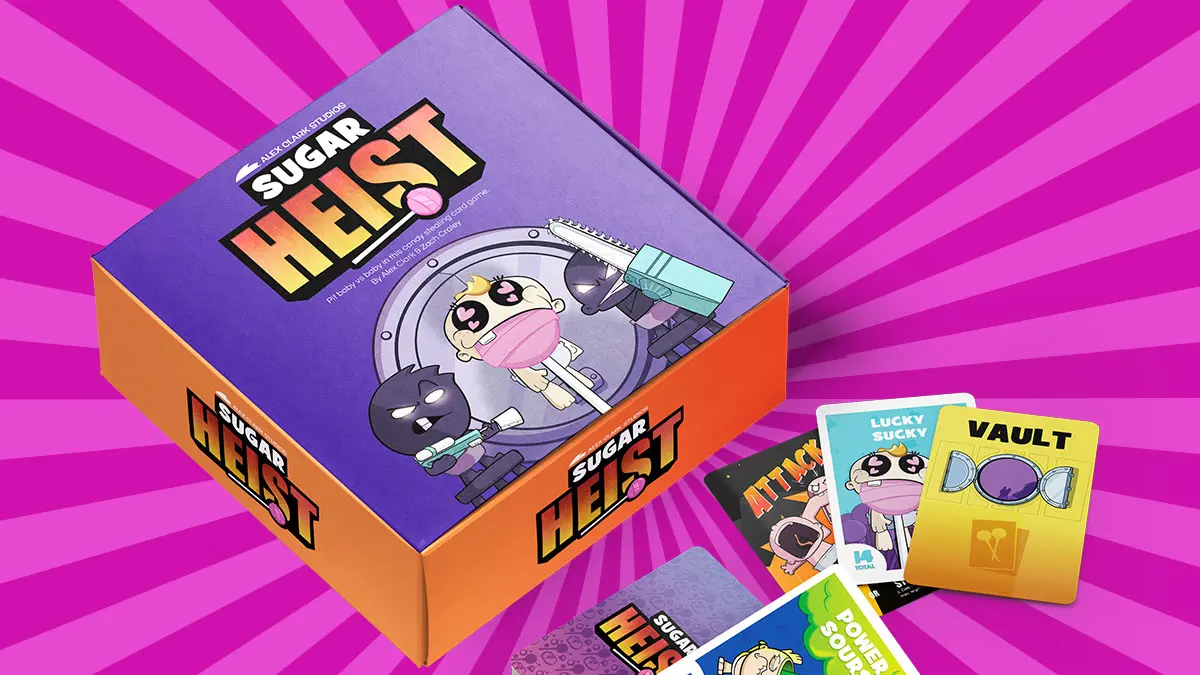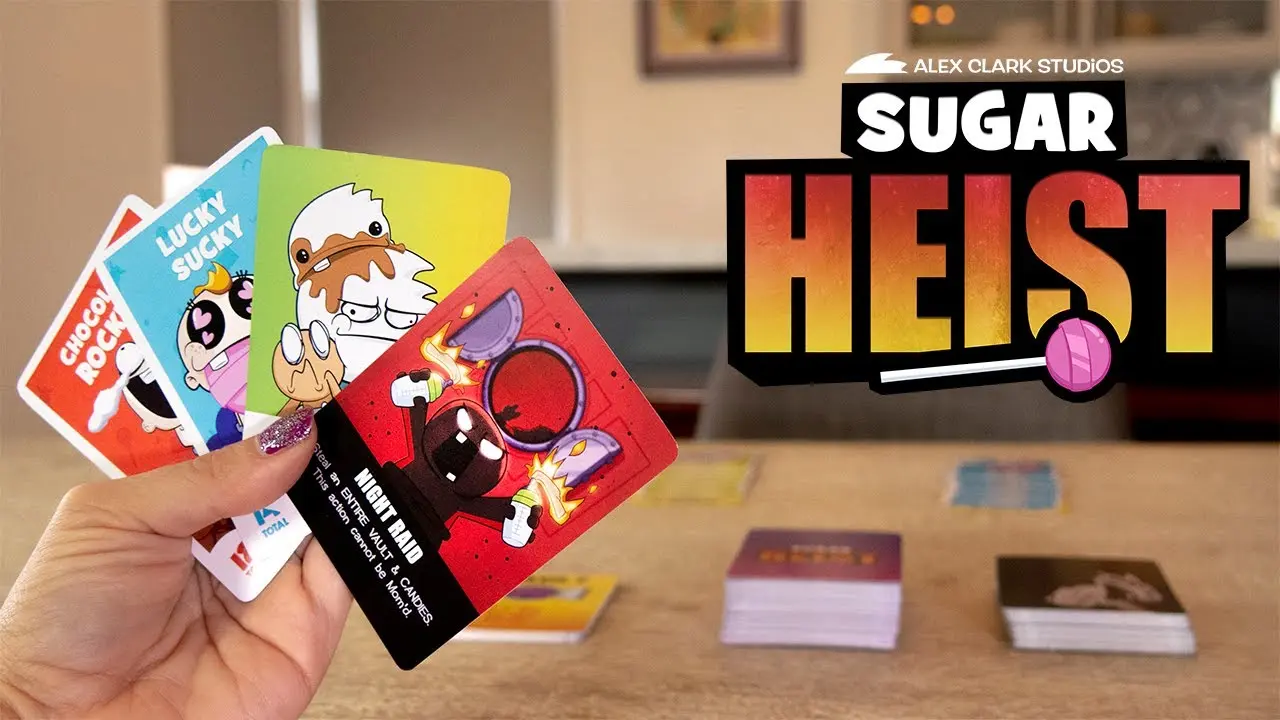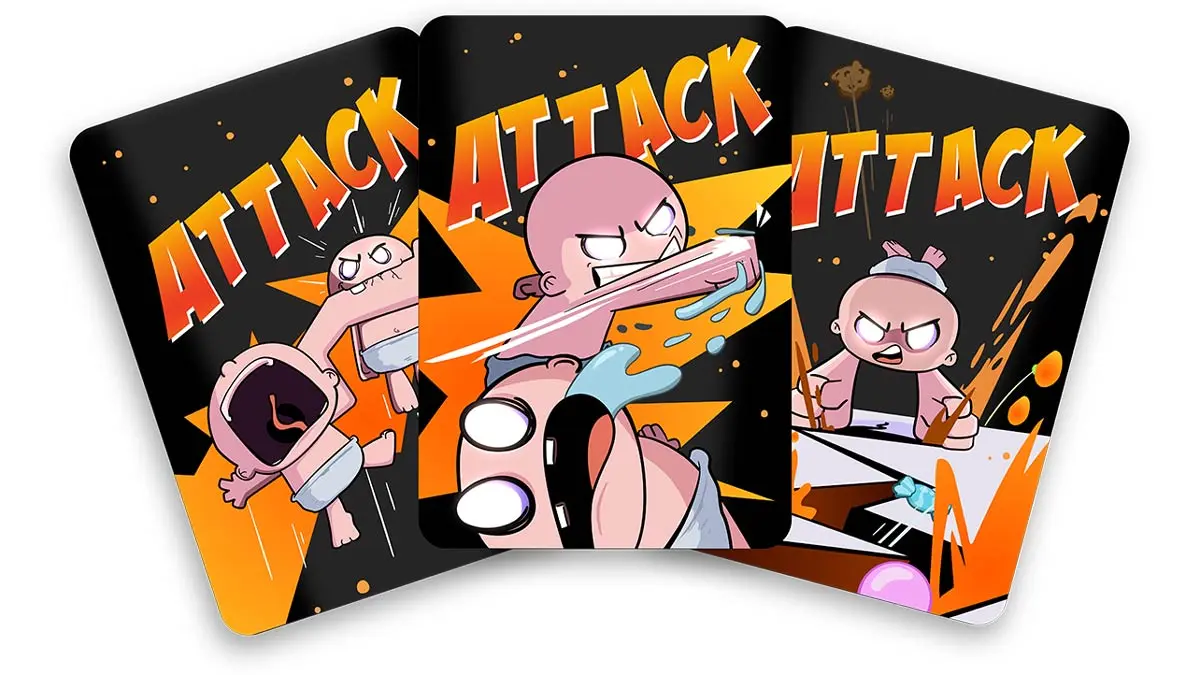
Sugar Heist is a card game with an interesting backstory. According to the game’s creator, the idea first came after one of their best friends became pregnant.
The initial premise of the game was dark and creepy. On the game’s Kickstarter page, it recalls that comedian Alex Clark – one of the co-creators of Sugar Heist along with Zach Craley – came up with a not-so-family-friendly concept.
“What if it’s a game where you collect candy and use it to lure children into your van?” he thought. Points would be awarded based on the number of kids in your van. Eek!
However, the game morphed from a dark comedy that retail stores would never be willing to touch with a ten-foot pole into something totally innocent.
The premise
You play as a baby collecting and storing candy. And since you’re still in your diapers, your currency of choice is also candy. But just as in real life – unless you’re a single child with no friends – there’s competition for the sugary sweet stuff.
The setup
Sugar Heist requires a minimum of two players, but you can play with three or more people. The instructions don’t mention a limit, but it’s probably safe to say that you will start to run out of cards with a large group exceeding five people.
At the start of the game, each player receives six candy cards and two vault cards. The candy cards have cutesy drawings and names like Fruity Booty, Lucky Sucky, and Nutty Butt. Candy cards are stored in your vaults with only one type of candy card used in each vault.
Candy cards also have a lock number. This tells you how many cards must be stored in a vault before you can lock the vault. Once you reach the lock number and lock the vault, other players cannot steal any candy from said vault.
The gameplay
The objective is to end the game with the most candy cards. And to most effectively do this without having opponents steal from you is to lock the vault – although that’s easier said than done.

That is because candies can only be stored in pairs of two. The candy cards can have vault lock numbers ranging from six to ten. And since you can only have six cards in your hand at once, the candy cards will likely be exposed at some point. The exception to that is if you happen to have six cards of one type with a vault lock number of six, which is fairly unlikely.
Complicating matters is the fact that, as mentioned, other players can steal candy cards from you. This is done using battle cards, which are purchased with stored candy cards. But we’ll get to that in a minute.
The phases of a player’s turn
Each player has three phases of play per turn. The first phase has players store any matching candy cards in available vaults (by the way, like battle cards, you can also purchase vault cards). As previously mentioned, vaults lock after you reach the vault number, and you can still add candy to locked vaults. It’s preferable to stash multiple pairs in vaults, but you may also want to store a single pair just to clear out your hand. Single pairs are also useful if you want to purchase battle or vault cards.
Phase two begins when the player flips over the top two candy cards from the draw pile for all to see. The player can choose to take these cards or trade them with other players. This is your chance to wheel and deal for cards that you want or need. It’s also a good opportunity to learn about what other players might have in their hands.
Once the bargaining is over or you’ve taken the two cards, you enter phase three. The third phase is when you buy battle cards and vault cards (you can own as many vaults as you want). It’s also when you play battle cards.
Let’s battle!
You can play battle cards at any point in phase three – either before or after you purchase cards. In fact, some battle cards require that you play them immediately. Also, battle cards do not count toward your hand limit, so purchase as many as you want.

There are four types of battle cards. Attack cards are used to take candy cards from other players. If you play the attack card immediately, you can do what is called a “heist.” If successful, you can claim up to six candy cards from the attacked player. You can also choose to “steal,” which is automatically successful unless the attacked player uses a “mom” card.
The other battle cards include the defense card, such as the aforementioned “mom” card that blocks attacks and a “quarantine” card that locks vaults when played. There are also action cards, the point of which is to cause chaos for a single other player.
Lastly, there are event cards, which affect all players. One of these cards, for example, involves dad jokes that force all of the other players to skip their next turn. These types of cards mix things up a little bit and add an extra layer of unpredictability to the game.
Once you get going, you can finish the game in about an hour. After you exhaust the candy card deck the first time, you shuffle the discard pile and go through another deck. The game ends once you exhaust all of the candy cards twice. The player with the most candy cards wins.
Conclusion
I was somewhat skeptical of Sugar Heist. To be honest, it looked a little immature. Plus, the manual was longer than I expected it to be. But once things got set up and we started playing, it actually proved to be a decent, family-friendly card game with a modest amount of strategy involved.
Is this something that I will have a hankering to play again anytime soon? Probably not, but I do not discount the possibility of pulling this out for a casual game night with friends or family.
By the way, Sugar Heist is not currently available at retail. According to the game’s Kickstarter page, the estimated delivery for backers is December 2020. We expect that it will hit retailers sometime in 2021.
Game Freaks 365 received a free review copy.
